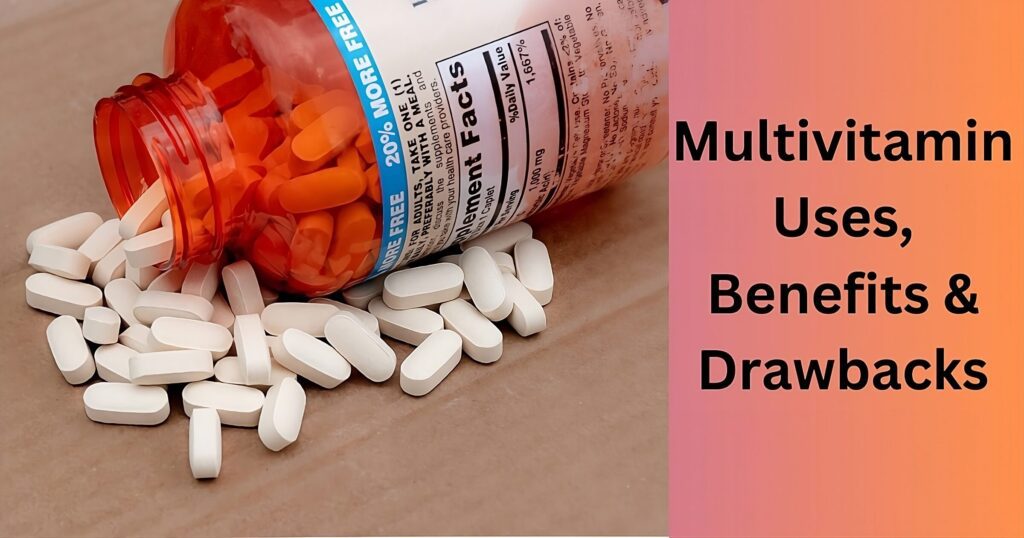Vitamin D
Dear Readers, welcome to My Health Tips Blog. In this article, we will explore in detail the benefits, sources, deficiency, and supplementation of vitamin D. Nowadays, many people use vitamin D, and there are numerous options available on the internet. Before delving into the details of vitamin D, let me share a bit of my own experience.
Prior to 2024, I had never used vitamin D. However, due to health issues in 2024, I started taking vitamin D3 sachets prescribed by my doctor. The doctor said I should take 4 sachets at 1-week intervals for up to 1 month. However, after consistently using them for 30 days, I began to see some improvements in my health. Therefore, I thought why not share with you all about vitamin D’s benefits, sources, deficiency, and supplementation.
Through this blog, I want to inform you all about vitamin D, its types, and its pros and cons so that you can use it correctly without experiencing any harm.

Vitamin D, often referred to as the “sunshine vitamin,” is a vital nutrient that plays a critical role in various bodily functions. Despite its importance, many people worldwide are deficient in vitamin D. This comprehensive guide will delve into the benefits of vitamin D, natural sources, symptoms of deficiency, and how to ensure you get enough of this essential nutrient.
What is Vitamin D?
Vitamin D is a fat-soluble vitamin that acts more like a hormone in the body. It is essential for several bodily functions, including the regulation of calcium and phosphorus levels, which are crucial for maintaining healthy bones and teeth. There are two main forms of vitamin D: D2 (ergocalciferol) and D3 (cholecalciferol). Vitamin D3 is produced in the skin in response to sunlight exposure and is also found in some animal-based foods, while D2 is obtained from plant-based sources and supplements.
Types of Vitamin D
There are two main types of vitamin D: Vitamin D2 and Vitamin D3. Here’s a brief overview of each:
1. Vitamin D2 (Ergocalciferol): Vitamin D2, also known as ergocalciferol, is a form of vitamin D that is obtained from plant sources and fungi. Unlike vitamin D3, which is synthesized in the skin upon exposure to sunlight, vitamin D2 is primarily derived from dietary sources and supplements.
– Source: Derived from plant sources and fungi.
– Dietary Sources: Found in some mushrooms such as shiitake and maitake, especially those exposed to ultraviolet (UV) light, and in fortified foods.
– Supplements: Available as a dietary supplement.

2. Vitamin D3 (Cholecalciferol): Vitamin D3, also known as cholecalciferol, is a crucial nutrient for maintaining optimal health. Often referred to as the “sunshine vitamin,” Vitamin D3 is vital for bone health, immune function, and overall well-being. Despite its importance, many people are deficient in this essential vitamin. This article will explore the benefits of Vitamin D3, natural sources, and tips for ensuring you get enough of this important nutrient.
Vitamin D3 is a fat-soluble vitamin that is synthesized in the skin when exposed to ultraviolet B (UVB) rays from sunlight. It is also found in certain foods and available as a dietary supplement. Vitamin D3 is the most effective form of vitamin D for raising and maintaining adequate vitamin D levels in the body, compared to vitamin D2 (ergocalciferol).
– Source: Produced in the skin when exposed to sunlight (UVB rays) and found in animal-based foods.
– Dietary Sources: Found in fatty fish (such as salmon, mackerel, and sardines), fish liver oils, egg yolks, and fortified foods.
– Supplements: Available as a dietary supplement and generally considered more effective at raising and maintaining overall vitamin D levels in the blood compared to D2.
While both forms are effective at raising vitamin D levels in the blood, vitamin D3 is typically preferred for supplementation due to its greater efficacy in increasing and sustaining these levels.

The Benefits of Vitamin D
1. Bone Health: Vitamin D is crucial for the absorption of calcium and phosphorus, promoting strong bones and teeth. It helps prevent conditions like rickets in children and osteomalacia or osteoporosis in adults.
2. Immune System Support: Vitamin D enhances the pathogen-fighting effects of monocytes and macrophages — white blood cells that are important parts of your immune defense — and decreases inflammation.
3. Mood and Mental Health: Studies suggest that vitamin D can influence mood and ward off depression. It is believed to enhance the production of serotonin, a neurotransmitter that affects mood.
4. Heart Health: Adequate levels of vitamin D are associated with a reduced risk of cardiovascular diseases. It may help regulate blood pressure and improve heart function.
5. Cancer Prevention: Some research indicates that vitamin D might play a role in reducing the risk of certain cancers, including breast, prostate, and colon cancer, due to its ability to regulate cell growth.
6. Muscle Function: Vitamin D is important for muscle health and function. It helps maintain muscle strength and may reduce the risk of falls and fractures in older adults.
Natural Sources of Vitamin D
1. Sunlight: The most natural way to get vitamin D is by spending time in sunlight. When your skin is exposed to UVB rays, it synthesizes vitamin D3. Aim for about 10-30 minutes of midday sun exposure several times per week, depending on your skin type and location.
2. Food Sources:
– Fatty Fish: Salmon, mackerel, and sardines are rich in vitamin D.
– Cod Liver Oil: An excellent source of vitamin D, as well as omega-3 fatty acids.
– Egg Yolks: Eggs, especially those from free-range chickens, contain some vitamin D.
– Fortified Foods: Many foods, such as milk, orange juice, and cereals, are fortified with vitamin D.
3. Supplements: If you have limited sun exposure or dietary intake, vitamin D supplements can help. Vitamin D3 supplements are generally more effective at raising blood levels of vitamin D than D2.
Symptoms and Risks of Vitamin D Deficiency
1. Bone and Back Pain: A deficiency in vitamin D can lead to bone pain and lower back pain due to impaired calcium absorption.
2. Frequent Infections: Low levels of vitamin D can compromise your immune system, making you more susceptible to infections and illnesses.
3. Fatigue and Tiredness: Chronic fatigue and tiredness can be symptoms of vitamin D deficiency.
4. Depression: There is a link between low vitamin D levels and depression, particularly in older adults.
5. Impaired Wound Healing: Vitamin D plays a role in wound healing, and deficiency can result in slower recovery from injuries.
6. Bone Loss: Insufficient vitamin D can lead to decreased bone density and an increased risk of fractures.
7. Hair Loss: Severe hair loss has been linked to low levels of vitamin D.

Diagnosing Vitamin D Deficiency
Vitamin D deficiency is diagnosed through a blood test measuring the level of 25-hydroxyvitamin D (25(OH)D) in your blood. Levels are categorized as follows:
– Deficient: Less than 20 ng/mL
– Insufficient: 20-29 ng/mL
– Sufficient: 30-100 ng/mL
– Potentially Toxic: More than 100 ng/mL
How to Maintain Optimal Vitamin D Levels
1. Regular Sun Exposure: Try to get regular sun exposure, but be cautious of overexposure to avoid skin damage. Factors such as geographic location, skin type, age, and use of sunscreen can influence how much sun exposure you need.
2. Eat a Balanced Diet: Include vitamin D-rich foods in your diet to help maintain adequate levels. Fatty fish, fortified dairy products, and egg yolks are good sources.
3. Consider Supplements: If you’re at risk of deficiency, talk to your healthcare provider about taking a vitamin D supplement. Vitamin D3 is generally preferred for supplementation.
4. Monitor Your Levels: Regular blood tests can help you keep track of your vitamin D levels and ensure they are within the optimal range.
Vitamin D Supplementation
1. Forms of Supplements: Vitamin D supplements are available in two forms: D2 and D3. While both can raise vitamin D levels, D3 (cholecalciferol) is more effective and is the preferred choice for supplementation.
2. Dosage: The recommended dietary allowance (RDA) for vitamin D varies by age, gender, and life stage. For adults, the RDA is typically 600-800 IU per day, but higher doses may be needed for those with deficiency or certain health conditions. Always follow the dosage recommended by your healthcare provider.
3. Combination with Calcium: Vitamin D and calcium work together to support bone health. Some supplements combine both nutrients to enhance their effectiveness.
Potential Risks of Excess Vitamin D
While vitamin D is crucial for health, it is possible to have too much. Excessive vitamin D intake can lead to toxicity, causing hypercalcemia (high levels of calcium in the blood), which can result in:
– Nausea and vomiting
– Weakness and fatigue
– Frequent urination and kidney problems
– Bone pain
To avoid toxicity, it is essential to adhere to recommended dosages and consult with a healthcare provider before taking high-dose supplements.
Conclusion
Vitamin D is a vital nutrient that supports numerous aspects of health, including bone strength, immune function, mood regulation, and cardiovascular health. By ensuring adequate sun exposure, incorporating vitamin D-rich foods into your diet, and considering supplements if necessary, you can maintain optimal vitamin D levels and enjoy the many benefits it offers.
Regular monitoring of vitamin D levels and consultation with healthcare professionals can help you make informed decisions about your vitamin D intake, ensuring you receive the nutrients necessary for a healthy and balanced life. Whether through sunlight, diet, or supplementation, prioritizing your vitamin D intake is a key step towards achieving and maintaining optimal health.
Frequently Asked Questions
What is Vitamin D?
Vitamin D is a fat-soluble vitamin that is essential for maintaining overall health and well-being. Unlike most vitamins, vitamin D functions more like a hormone, as every cell in the body has a receptor for it. It can be synthesized by the body when the skin is exposed to sunlight, and it is also obtained from certain foods and supplements.
What are the types of Vitamin D?
There are two main forms of vitamin D:
1. Vitamin D2 (Ergocalciferol): Found in some plant-based foods and fortified products.
2. Vitamin D3 (Cholecalciferol): Found in animal-based foods and produced by the skin when exposed to sunlight.
What are the functions of Vitamin D?
Vitamin D plays several crucial roles in the body:
1. Calcium Absorption:
Vitamin D enhances the absorption of calcium from the intestines, which is vital for the development and maintenance of healthy bones and teeth.
2. Bone Health:
It helps regulate calcium and phosphate levels in the blood, promoting bone mineralization and preventing conditions like rickets in children and osteomalacia and osteoporosis in adults.
3. Immune System Support:
Vitamin D boosts the immune system, helping the body fight off infections and reducing the risk of chronic diseases.
4. Muscle Function:
It is important for muscle function and can help prevent muscle weakness and falls in older adults.
5. Inflammation Reduction:
Vitamin D has anti-inflammatory properties and can help regulate the immune response.
6. Cell Growth:
It plays a role in cell growth, differentiation, and apoptosis (programmed cell death), which is important for preventing cancer.
What are the sources of Vitamin D?
Sources of Vitamin D
1. Sunlight:
The skin produces vitamin D when exposed to ultraviolet B (UVB) rays from the sun. About 10-30 minutes of sun exposure several times a week is generally sufficient, depending on skin type, location, and time of year.
2. Food:
Fatty Fish: Salmon, mackerel, sardines, and tuna.
Liver: Beef liver.
Egg Yolks: Contain small amounts of vitamin D.
Fortified Foods: Milk, orange juice, cereals, and plant-based milk alternatives often have added vitamin D.
Mushrooms: Some mushrooms exposed to UV light can provide vitamin D2.
3. Supplements:
Vitamin D supplements are available in various forms, including D2 and D3. D3 is generally considered more effective at raising blood levels of vitamin D.
What is the RDA of Vitamin D?
The Recommended Daily Allowance (RDA) for vitamin D varies based on age, sex, and life stage:
Infants (0-12 months): 400 IU (10 mcg)
Children (1-18 years): 600 IU (15 mcg)
Adults (19-70 years): 600 IU (15 mcg)
Older Adults (71+ years): 800 IU (20 mcg)
Pregnant and Breastfeeding Women: 600 IU (15 mcg)
What happens when Vitamin D is low?
A deficiency in vitamin D can lead to several health problems:
1. Rickets (in children):
Softening and weakening of bones, leading to skeletal deformities.1.
2. Osteomalacia (in adults):
Softening of the bones, resulting in bone pain and muscle weakness.
3. Osteoporosis:
Increased risk of fractures due to reduced bone density and strength.
4. Increased Risk of Chronic Diseases:
Deficiency has been linked to a higher risk of cardiovascular diseases, certain cancers, autoimmune diseases, and infections.
5. Symptoms of Deficiency:
Fatigue, bone pain, muscle weakness, muscle aches, and mood changes, such as depression.
What are normal Vitamin D levels?
Vitamin D levels in the blood are typically measured by the concentration of 25-hydroxyvitamin D (25(OH)D), which is the best indicator of overall vitamin D status. Here are the generally accepted categories for vitamin D levels:
1. Deficient:
Less than 20 ng/mL (50 nmol/L)
2. Insufficient:
20–29 ng/mL (50–74 nmol/L)
3. Sufficient:
30–100 ng/mL (75–250 nmol/L)
4. Potentially Toxic:
Greater than 150 ng/mL (375 nmol/L)
Optimal Levels
While there is some debate among experts about the exact optimal levels, most agree that a 25(OH)D level between 30 and 50 ng/mL (75-125 nmol/L) is generally sufficient for most people. Maintaining levels within this range supports bone health, immune function, and overall well-being.
READ MORE:
- Vitamin E : Overview, Advantages & Disadvantages
- Vitamin E : Frequently Asked Questions
- Vitamin K – Overview, Name, Advantages & Disadvantages
- Multivitamins Uses, Benefits & Drawbacks
- Vitamin B12 : Benefits, Sources, and Deficiency Symptoms
I hope this article is helpful to you.
Thank You!






